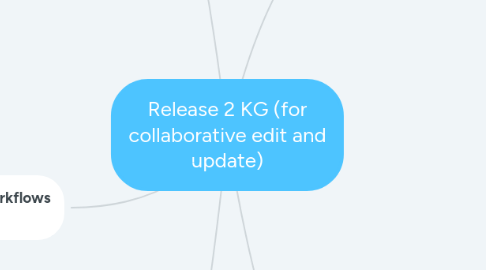
1. Interface Capabilities for Clients
1.1. Upload of client data
1.1.1. Client user and recipe database
1.2. Phase 1
1.2.1. API for food scoring
1.2.2. API for recipe upload
1.2.3. API for Traffic Light
1.2.4. API for Explainer with Microbiome
1.3. billing and metering capability
1.4. Workflow for new client addition
1.5. Infra and Security Specifications
1.6. Requirements from Client
1.6.1. Get ingredient list from salad stop
1.6.2. Explainer Visualisation
1.6.3. Customer Capability to Update Load Recipes to KG
2. Pipeline and Workflows Capabilites
2.1. Explainer capability
2.1.1. short form explainer
2.1.2. long form explainer
2.1.3. with/without microbiome
2.1.4. Supporting data
2.1.4.1. food analytics to support statements like Kale....... is the top 5% of vegetables for vitamins and minerals
2.2. Scoring
2.2.1. Food Scoring/ Traffic Light Detailed Mind Map
2.2.2. AMILI food score
2.2.2.1. diabetes
2.2.2.2. ibs
2.2.2.3. cardio
2.2.2.4. other diseases
2.2.3. Traffic Light Scoring
2.2.3.1. diabetes
2.2.3.2. ibs
2.2.3.3. cardio
2.2.3.4. other diseases
2.2.4. Creation of a Scoring calculator
2.3. Algorithms
2.3.1. ?
2.4. User profile
2.4.1. Customer profile
2.4.2. Interface with customer profile data V2
2.5. PII data storage and incorporate into the Graph
3. Common Standard Processes
3.1. Data Quality Validation
3.1.1. Ensure that a full food list for IBS etc. exists
3.1.1.1. Add existing food list ( V2 / BME) to DB
3.1.2. Quality of Datasets
3.2. Establish Baseline Architecture
3.2.1. Single Repository in GITHUB/ CC?
3.2.2. Link Github with Click-up
3.2.3. Baseline architecture
3.3. Bug Fixing
3.3.1. Scope
3.4. Naming Convention and Terminology
3.4.1. E.g. Tuna vs Tuna Fish
4. Create Update and Manage Food Datasets
4.1. Internal Data Workflows
4.1.1. Data flows
4.1.1.1. Workflow for New ingredient addition
4.1.1.2. Workflow for new recipe addition
4.1.1.2.1. Build data pipeline to process a recipe and deliver the micronutrients composition for each dataset
4.1.1.3. Create and Update a new tag and update DB
4.1.2. Data Engineering
4.1.2.1. Differential, Deduplicated Data Load
4.1.2.2. API and metering
4.2. Build food DB with numerical micronutrient values for
4.2.1. FNDDS+ Legacy + Others(?)
4.2.2. Add values for critical micronutrients
4.2.2.1. histamine
4.2.2.2. GI
4.2.2.3. INULIN
4.2.2.4. others.............
4.2.2.5. FODMAP
4.2.3. Ensure that recipe maps accurately with the ingredient database
4.3. Completed Taxonomy of all Nutrients and Micronutrients
4.4. Create a baseline ingredient data set with Mircronutrients
4.5. Recommended Daily Allowance
4.5.1. Healthy
4.5.2. DIsease
4.5.2.1. Diabetes
4.5.2.2. IBS
4.5.2.3. Others
5. February_March Release
5.1. Food education API
5.1.1. Gamification of Food and Disease Education
5.1.1.1. Approach 1: Health goals----> Build a better "bowl".
5.1.1.1.1. Reduce Bloating
5.1.1.1.2. Manage your weight
5.1.1.1.3. Manage your SUGAR
5.1.1.1.4. Manage Food Intolerances
5.1.1.2. UX model
5.1.1.2.1. Have a pie chart that keeps getting filled the moment you add that ingredient
5.1.1.2.2. PIE CHART ---> Nutrients you needed
5.2. Machine Learning for diseases
5.3. Quality control of recommendations
5.4. Metering of API
5.5. Scaling of API
5.6. oNBOARD new datasets
5.6.1. medication
5.6.2. probiotic
